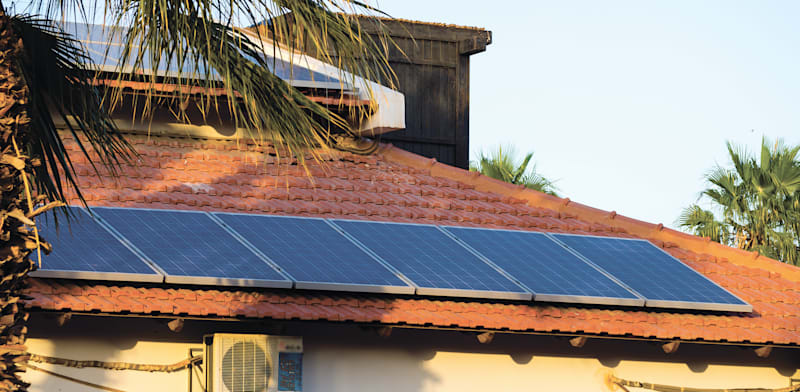A study published by the Ministry of Energy and Infrastructure points to serious shortcomings in the existing regulation of solar energy installations, which must be installed rapidly if Israel is to achieve its renewable energy targets. Among other things, the study, written by EY, claims that there are 11 different regulators, each of which adds a layer of regulation, and that they do not communicate sufficiently with each other. In addition, according to the study, regulatory changes are frequent, regulators do not meet promised deadlines, do not operate transparently, and there is no fully digital process.
The study recommends that the Ministry of Energy and Infrastructure contact each of the regulators to ensure the ability to build solar installations at a sufficient pace, and to build a digital system that will centralize all the stages. Minister of Energy Eli Cohen said, “This is an important step that will make the installation of solar panels and storage facilities much simpler.”
Long and cumbersome regulatory process
Anyone who wants to build a solar facility, even a relatively modest rooftop one (even so much larger than a house) with a capacity of under 700 kilowatts, must go through a long and detailed regulatory process that delays and sometimes even disrupts the construction process. Depending on the specific type of facility, solar developers are affected by directives from 11 government bodies: the Planning Administration, Fire and Rescue, Agriculture Broadcasting, Water Authority, Ministry of Environmental Protection, Nature and Parks Authority, Antiquities Authority, Electricity Authority, Electric Corporation, Israel Land Authority, Ministry of Energy, Home Front Command, Ministry of Health and Israel Police.
Each of the regulators, of course, has different requirements, and many times they do not share the information – so that duplicate and cumbersome procedures are required that result in unnecessary time and money being spent. According to the Ministry of Energy, “The study maps 23 different processes for the construction of solar facilities and storage facilities, and includes an analysis of dozens of procedures and regulations, and a mapping of hundreds of operations required to build the facilities.”
According to market sources, the regulatory part of a small facility can take about a year, and on the large side: between three and four years. This is compared to the few months that the physical construction of a large project takes. The study carries out an orderly mapping, which the study authors summarized in a large number of flowcharts, of all the regulatory procedures. The body to which the largest part of the study is dedicated is the Planning Administration, followed by the Israel Land Authority and the Electric Corp., which is responsible for connecting the facility to the grid. Without this stage, the solar panels are useless.
RELATED ARTICLES
Indeed, according to the same market sources, the planning committees are very difficult and sometimes meticulous, and the Electric Corp. and the Israel Land Authority also make the process very difficult. On the other hand, Noga and the Electricity Authority are better and more effective regulators. This is probably due to their professional understanding and mobilization for the issue of establishing solar infrastructure in Israel. Today, only about 14% of the energy in Israel is produced from renewable energy, almost all from solar energy. Israel’s target is 30% by 2030, and at the current rate – it is not clear how the country will be able to reach it.
The study found concrete problems in each of the regulators, but its cross-cutting recommendations are to “promote cooperation and continue working with the regulatory bodies to remove barriers,” noting that such a dialogue has already begun. It also recommends “developing a digital system to make regulatory information accessible,” along with tools for managing the process and reporting on obstacles.
The ultimate aim, from the perspective of the Ministry of Energy’s research, is to reach a “One Stop Shop” that will allow solar energy developers to manage the entire process through a unified and comprehensive system, which will allow for a convenient interface with all regulators while monitoring the efficiency of the process.
The Ministry of Energy and Infrastructure took the opportunity to call on developers, professionals, local authorities, government bodies and the general public to submit comments by Sunday, August 17, 2025 at 10am, in order to focus the work on simplifying regulation.
Cohen says “The publication of the document is an important step that will make the installation of solar panels and storage facilities much simpler and will help reach the goal of 100,000 new solar roofs. Installing solar panels allows roof owners to enjoy additional financial income and consume electricity during emergency hours, and it increases the energy security of the State of Israel, while producing non-polluting electricity for the benefit of the health of all citizens.”
Published by Globes, Israel business news – en.globes.co.il – on July 20, 2025.
© Copyright of Globes Publisher Itonut (1983) Ltd., 2025.








